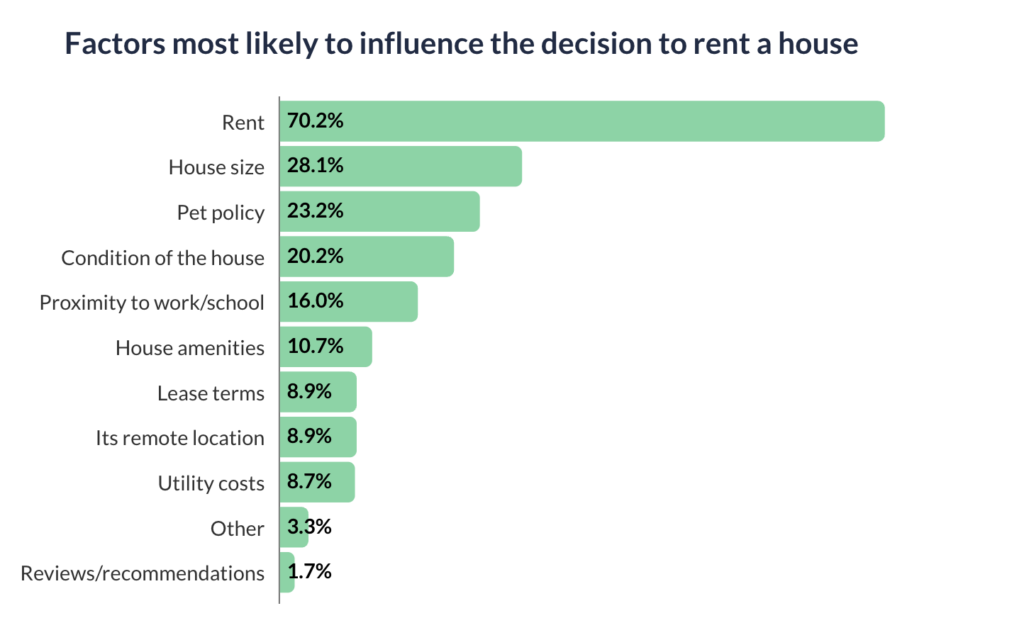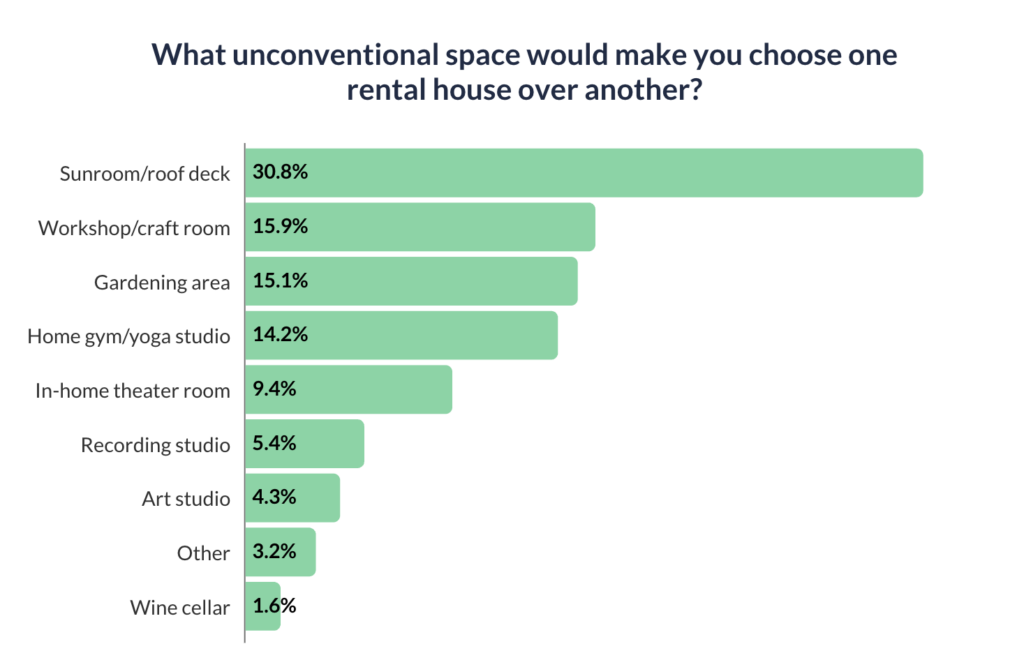While some believe the “American Dream” is still attainable in today’s market, new Point2 data showed that a growing number of prospective homebuyers do not see themselves as homeowners, citing a combination of factors such as mortgage rates, availability, and growing home prices.
Because many Americans don’t believe homeownership is likely in their future, renters of single-family homes have grown to be a major force in the residential market, greatly influencing the post-pandemic environment. Home renters place a higher value on attributes usually associated with homeownership—privacy, space, and a yard—than apartment residents. But according to a recent Point2 survey, pet accommodations are now more important to renters than having enough space for growing families.
Due to rising home prices, mortgage rates, and limited availability, renting is typically the best option. Additionally, as homeownership becomes more and more unattainable, single-family rentals are now the entry point for those who are no longer able to afford to buy—redefining the term “starter home.”
To some, it would make sense that a growing number of U.S. renters are choosing to live in and rent single-family homes. In addition to being significantly larger, they are brand-new builds, which has its own advantages such as: contemporary, higher-quality materials, contemporary designs, cutting-edge appliances, in-demand facilities, and even opulent features and finishes.
However, maybe it’s safe to agree that some people’s love for their home would never outweigh the love for their pet. When it comes to choosing a house over an apartment, the main reasons most choose rental units are privacy and space; home size comes in second, right behind rent. But the other thing that home renters prioritize? Their fur babies. Animals are like family to many, so it may not come as a surprise that renters factor them into their housing choices.
Better pet accommodations were cited by over 13% of respondents as the primary justification for renting a single-family house rather than an apartment. While it may not seem like much, it is more than the 11.3% of respondents who stated that their primary motivation was to accommodate a growing family. Moreover, over 68% of respondents to the survey own pets and view their furry family members as members of the household. Nearly 6% of respondents think that having a pet would even justify a rent increase, and over 23% of respondents feel that a pet policy is important when choosing a rental.

Home Renters Satisfied with Rentals, But Half Would Still Purchase Property
Home renters have mixed preferences: they enjoy the stability that comes with longer stays, but they also value the flexibility and convenience of renting. Their comprehension of the trade-offs between owning and renting is facilitated by this balance, which in turn molds their preferences for the most important aspects of a house.
Approximately 1,020 of the 1,509 respondents in the poll are renters. Remarkably, although the majority are happy with their present rental, roughly 27% took a neutral position, expressing neither specific satisfaction nor disappointment.
This impartial stance might indicate that they are balancing the flexibility of renting against the long-term commitment of purchasing or the need for a more customized place. Even still, there is still a lot of attraction to the American Dream of home ownership, as nearly 52% of renters said they remain interested in purchasing a home.
Remaining in one’s current residence is the second most preferred housing option; over 19% of respondents are determined to do so because they value the stability and flexibility that renting offers. This kind of commitment ultimately affects the improvements that tenants want since, in the event that they decide against buying a property, they might want to improve their existing living areas.
Home Renters Dish Out Their Amenity Wishlist
A modernized kitchen was the feature that most house tenants mentioned when asked what they would change about their property. Improved energy efficiency and more room (for storage and living areas, such as a finished basement or converted attic) were the next priorities, and they were split almost evenly.
Renters may be persuaded by unique spaces that offer luxury, distinctive features, or improved comfort in addition to practicality. When deciding between rental homes that are otherwise comparable, these unique locations may be the difference maker. For example, nearly one-third of poll respondents would like a sunroom or roof deck, while over 15% would prefer a greenhouse or a workshop/craft room sort of area.

Home Renters Value Skipping Upkeep and Remain Content in Their Rentals
Home renters are nothing if not realistic about their alternatives, despite their desire for renovations. The ideal house rental type is more realistic than idealistic, especially when it comes to property size.
The majority of respondents to the study (65.6%) who rent single-family homes do so in detached homes with three bedrooms and two baths. It’s interesting to note that renting a similar type of property with the same number of bedrooms and bathrooms was the most frequently suggested combination when questioned about the ideal house size and layout. This implies that a big number of tenants’ present living situations roughly match their ideal ones: while they may wish to upgrade, they are generally content with the amount of room they have.
Less responsibility is one of the main benefits of renting, especially with all of the upkeep and maintenance that come with owning a home. In light of this, the poll found that over 41% of participants don’t find it particularly bothersome when they can’t make the renovations or alterations they’d like to make to a single-family rental. Further, some 4% of renters actually prefer that their contract states that alterations are not permitted because it reduces responsibilities and causes the renter to have less difficulty overall.
However, the majority of renters consider that basic kitchen appliances, such as a refrigerator, stove, or dishwasher, are necessities. In fact, an estimated 11% of them think that a kitchen appliance update should be sufficient justification for a rent rise. But when it comes to necessities, nothing compares to air conditioning and heating, since 68% of respondents said they are a must.
In conclusion, data from the IPUMS Census show that the number of single-family renter households increased to over 14.2 million last year from 14 million in 2020. Build-to-rent solutions are filling the void left by the demand. With 45,400 single-family rentals presently in the development phase, 2024 is expected to beat the record 27,500 completions set in the previous year. This rapid expansion is a reaction to growing demand, particularly after the pandemic and in light of the current unfavorable market conditions that are excluding an increasing number of prospective buyers.
To read the full report, including more data, charts, and methodology, click here.
The post Renting vs. Buying: Single-Family Homes Offer Tenants More Options first appeared on The MortgagePoint.























